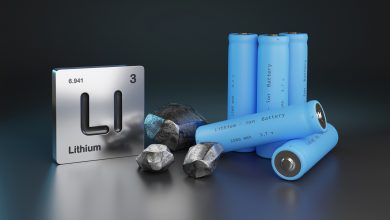Gold Investment: Their Advantages and Disadvantages

Index Of The Blog
It has already been established that gold has been performing well because of the economic and social disruptions of 2020. Investors are turning to essential commodities and hedge funds to secure their finances in today’s unpredictable financial climate.
One of the most sought-after investments today is gold. Starting at $1,560.67 in January, it has since increased about $400 more this November.
An investor who bought 20 1oz gold coins in January is now $8000 richer today.
Experts predict that the precious metal’s value per ounce can break through the $3000 mark past 2025. This dramatic increase comes from the increasing demand for the metal.
When the American dollar drops in value, the price of gold per ounce soars. This causes more investors to hoard the metal with the foresight that it will continue to rise for years.
Gold has always been used as an emergency fund. Even in the past two world wars, owners used their assets to trade for food and safety. The long history of human valuing of gold makes it highly wanted by any society.
The precious metal has long been used to assert power and wealth. Those who own significant amounts of gold are upheld by society.
It is also used by religions to adore their gods. Cathedrals, mosques, and Hindu and Buddhist statues and images are adorned with gold.
Emerging economies whose citizens upgrade their lifestyle and turn to luxury add constant demand yearly. Everyone will accept gold in exchange for any value, making it an excellent item of investment.
The most effective way of investing in gold is owning significant amounts of the asset in a physical store. However, there are also other methods by which an investor can earn money from the high-performing commodity.
The following are the pros and cons of every method by which anyone can invest in gold.
Gold ETFs or Exchange-Traded Funds
Exchange-Traded Funds work like stocks. An investor buys shares from an ETF company that deals with gold.
Gold ETF Pros:
This investment method is quite convenient. All an investor needs to do is buy the stocks online and then trade.
When the prices are low, an investor buys stocks, and when the prices are high, the shares are sold, and profits are made.
Gold ETF Cons:
The issue with ETFs is that an investor will not own gold with the investment method. The investor owns stocks that the server company uses to earn by trading gold.
Also, since purchases and sales happen quite fast in ETFs, the graphs are volatile, and it can be hard to predict the right time to do the right action. It is easier to lose money with this investment than it is to earn.
Another potential but crucial flaw is that an ETF company is not invincible. When their operations fail, their investors lose their money.
Gold Certificates
Gold certificates allow an investor to own a specific amount of gold without having to store it privately. The investor makes a purchase and is sent a certification of ownership.
The seller continues to hold the gold for the owner physically.
Gold Certificates Pros:
With a gold certificate, the owner doesn’t need to prepare a physical space for the assets. It is more convenient to store paper than metal.
It is also easy to acquire recertification when the paper is lost. An owner only needs evidence of theft or loss and confirmation of identity.
Gold Certificates Cons:
When emergencies arise, a gold certificate owner doesn’t have the physical gold on hand, making it hard to quickly retrieve needed cash. Also, a certificate cannot be subdivided into denominations – if an owner needs cash value worth only half the certificate, the paper cannot be cut into two.
Another downside is that when significant social disruptions occur, nobody will accept a piece of paper as payment for food and shelter. The entity holding an investor’s item might also act in bad faith and exchange the asset for its own interests.
Gold Mining Operations
Mining operations are a straightforward concept. An investor will buy the needed equipment, hire experts, find a potential site, and mine for gold.
When the operation is a success, the gold can be sold raw to processing plants or retailers. A mining investor or company can also opt to complete the entire supply chain, from mining to processing and retail.
An investor can also opt to buy shares with a mining company instead of running a new operation.
Gold Mining Operations Pros:
This business provides the most significant potential returns. It can earn an investor or a group of investors, like a corporation, and its shareholders, immense profits.
Especially if a mining company completes the supply chain for itself, this type of business can make an investor have significant control in the gold market. A miner owns physical gold and profits out of it in all selling opportunities.
Gold Mining Operations Cons:
It takes time, expertise, and risk to succeed in mining. Most people cannot afford to run such an operation.
Acquiring the right equipment, human resources, logistics, and research is not an easy feat. If the correct preparations are unmet, the operation will fail, and all of the invested money is lost.
Jewelry Business
This investment method is also straightforward. Either an investor creates jewelry and sells it to retailers, outsources from jewelers and markets as a retailer, or both.
Jewelry Business Pros:
While a jewelry business owner’s stocks are not bought, the gold being stored is an excellent investment. When the economy is good and people are looking out for luxury items, an investor in the jewelry business can enjoy significantly high profits.
Jewellery Business Cons:
When people in a country are suffering from financial loss, the demand for luxury items such as jewelry drops. While the gold’s intrinsic value of the unsold stocks remains intact, the investor can lose many added costs of production, marketing, and others.
Jewelry is not the best investment to acquire for 2020. Even an investor not doing business but merely owning jewelry might end up selling items for a loss during this time.
Acquiring Gold Bullion
Acquiring bullion is today’s best option that is accessible to almost anyone. Bullion is precious metals in the form of bars, coins, rounds, fractional items, bullets, and hand-poured items.
Bullion comes in gold, silver, platinum, and copper. It comes in different sizes, and any level of investor can acquire gold online via monthly deliveries.
Acquiring Gold Bullion Pros:
Bullion deliveries allow investors to collect physical gold and precious metals for assets. This investment gives investor premiums in conveniently subdivided forms.
When emergencies arise, it is easy to trade or pawn bullion for urgently-needed cash. If only $100 is needed, it is easy to pick the items to sell to get the exact value.
Also, it is significantly convenient to get bullion today. An investor only needs to choose from available options online, and a seller company will deliver bullion monthly.
One of the best things about getting bullion is that an investor will acquire gold and also get silver, platinum, and copper. Owning different precious metals will not only add more denominations to a collection but will give an investor more opportunities in different markets.
For example, with copper and silver, an owner can sell to electronics production companies. With platinum, an investor can sell items up to twice the value of gold when the economy is stable.
Acquiring Gold Bullion Cons:
An investor would have to dedicate a physical space for storing bullion. While this can be challenging for an investor at first, the technologies available for security and organizing can ease things up.
In the olden days, acquiring physical gold had painstaking requirements. Investors have had to go through expeditions and travel to find gold.













